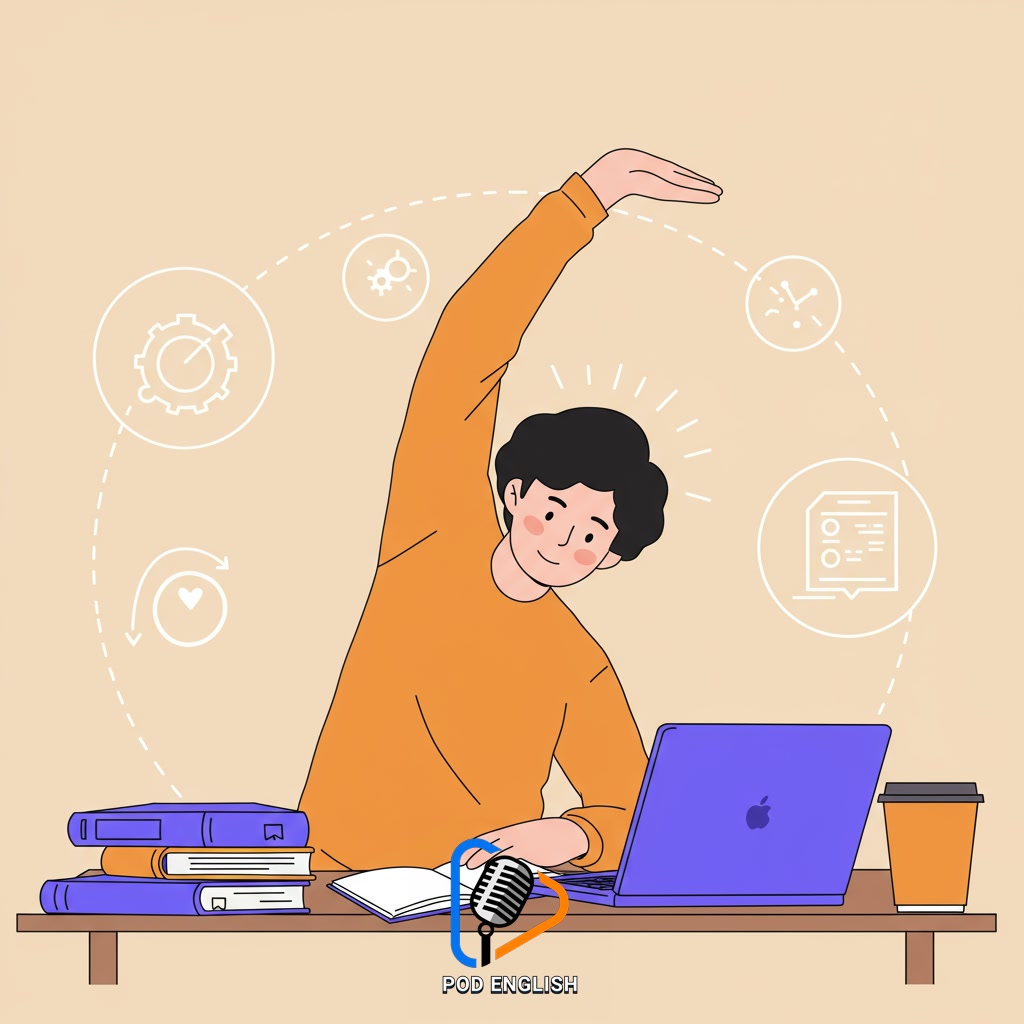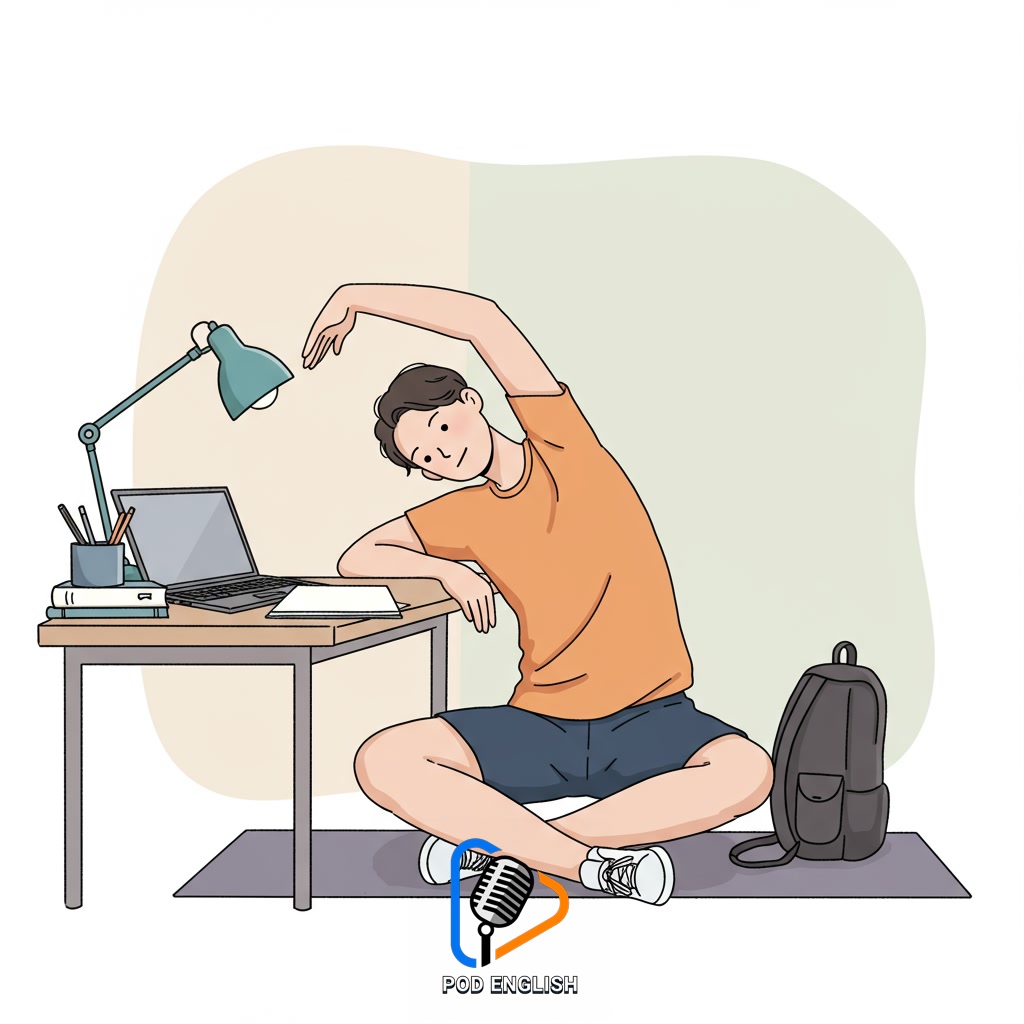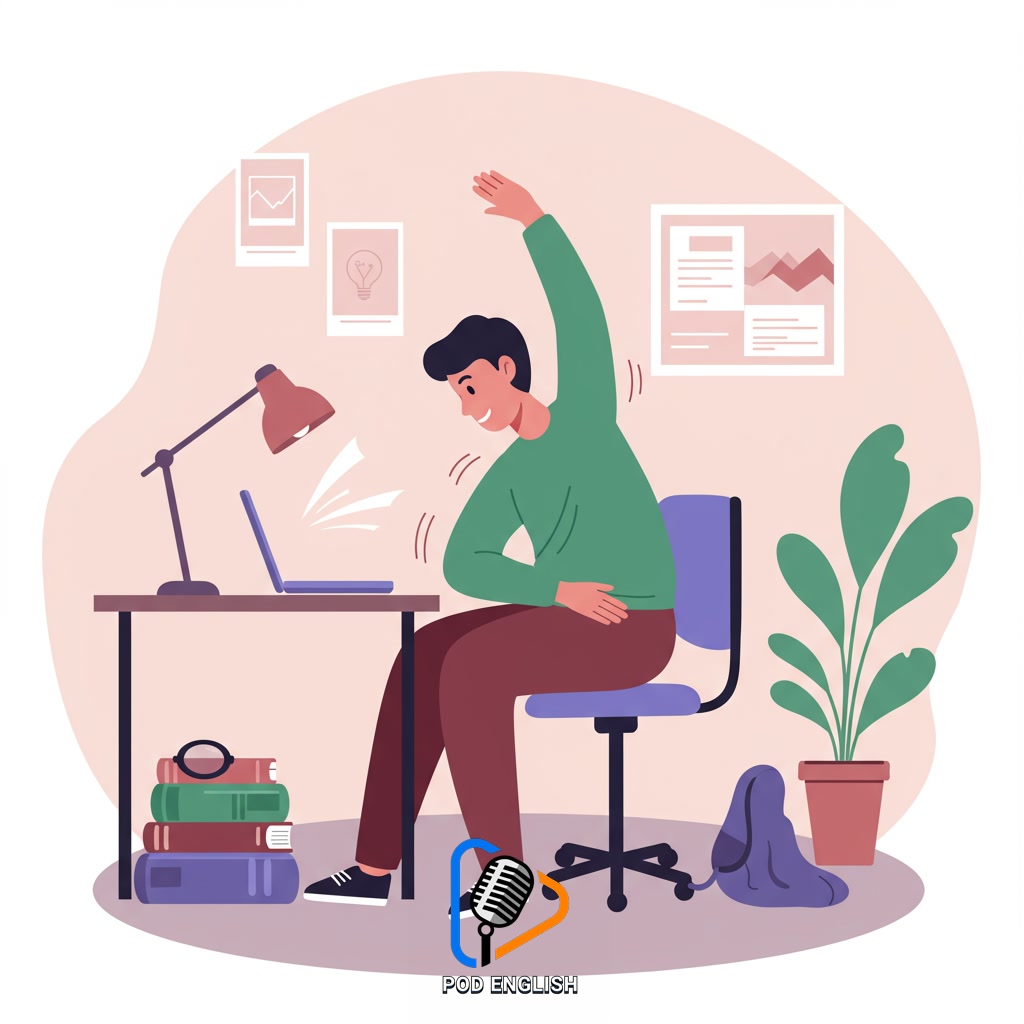Learn English
Unlock Focus with Simple Stretches for Learning English

Discover how simple stretches can significantly boost your ability to concentrate. This approach is especially beneficial for those actively engaged in the process of learning English. Integrating these easy physical movements into your routine can make your study periods more productive. They offer a straightforward technique to sharpen focus while developing language proficiency.
Table of Contents
- Section 1: The Connection Between Physical Activity and Learning Focus
- Section 2: Why Simple Stretches Boost Focus for English Learners
- Section 3: Easy Stretches to Incorporate While Studying English
- Section 4: How to Integrate Movement into Your English Study Routine
- Section 5: Maximizing Focus: Tips Beyond Just Stretching
Section 1: The Connection Between Physical Activity and Learning Focus
Engaging in physical activity, even something as simple as a quick stretch, has a direct and positive impact on your brain’s ability to focus. When you move your body, you increase blood flow, which delivers more oxygen and nutrients to your brain. This improved circulation helps clear away mental fog and revitalizes your cognitive functions. For those learning English, this means your brain is better prepared to absorb new vocabulary, understand complex grammar, and practice speaking without feeling overwhelmed by fatigue. Taking short breaks to stretch can reset your attention span, making your study sessions more effective and less tiring. It’s a simple yet powerful way to support your mental performance while building language skills.

The Connection Between Physical Activity and Learning Focus
Section 2: Why Simple Stretches Boost Focus for English Learners
Simple stretches are incredibly effective for boosting focus, especially when you’re tackling the challenge of learning English. Beyond just increasing blood flow, which delivers vital oxygen and nutrients to your brain, stretching helps alleviate physical tension that can build up during long study sessions. When your muscles are relaxed, your mind is less distracted by discomfort, allowing for clearer thinking and better concentration. This release of tension also helps reduce mental fatigue, a common obstacle when absorbing new vocabulary or complex grammar rules. By incorporating these brief physical breaks, you refresh your brain, making it more receptive and efficient for processing and retaining the information you’re learning, ultimately enhancing your language acquisition journey.

Why Simple Stretches Boost Focus for English Learners
Section 3: Easy Stretches to Incorporate While Studying English
Integrating simple physical movements into your English study routine is key to maintaining focus and energy. You don’t need a gym or special equipment; these are stretches you can do right at your desk or chair. Easy options include gentle neck rolls to release tension, shoulder shrugs to loosen upper back muscles, and simple seated twists to improve circulation. Standing up occasionally for a quick arm stretch or leg shake also helps. The goal is to break the monotony of sitting, encourage blood flow to your brain, and signal to your body that it’s time for a brief reset. By incorporating these quick, easy stretches every 20-30 minutes, you can combat fatigue, reduce stiffness, and return to your English learning with renewed concentration and a clearer mind, making your study sessions significantly more effective.

Easy Stretches to Incorporate While Studying English
Section 4: How to Integrate Movement into Your English Study Routine
Integrating movement into your English study routine is simpler than you might think. The key is to weave short physical breaks into your study sessions naturally. Instead of trying to push through fatigue, take 2-3 minutes every 25-30 minutes to stand up, stretch your arms overhead, or gently roll your shoulders and neck. If you’re sitting, simple stretches like chair twists or bringing your knees to your chest can be done discreetly. Use transitions between different English learning tasks – like moving from grammar exercises to listening practice – as cues to incorporate a quick stretch. This deliberate integration helps break the monotony, reactivates your body, and prepares your mind to refocus on absorbing new English vocabulary or concepts, making your learning more effective and less tiring.

How to Integrate Movement into Your English Study Routine
Section 5: Maximizing Focus: Tips Beyond Just Stretching
While simple stretches are excellent for breaking up study sessions and re-energizing your mind, maximizing focus for learning English involves more than just physical movement. To truly sharpen your concentration, consider implementing strategies like the Pomodoro technique, which structures study time into focused bursts followed by short breaks. Creating a dedicated, clutter-free study space minimizes external distractions. Setting clear, achievable goals for each study session also helps direct your attention effectively. Combining these environmental and time management techniques with regular stretching ensures a holistic approach to maintaining high levels of focus, making your English learning journey more efficient and rewarding.

Maximizing Focus: Tips Beyond Just Stretching













